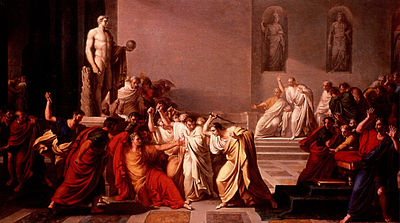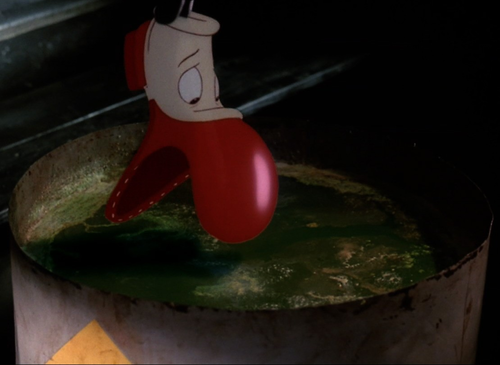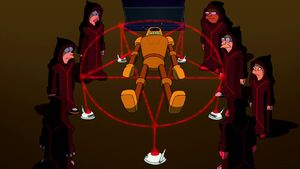Note: An older version of this article was originally posted on Dungeon’s Master.
Is Betrayal Inevitable?
There is a spoken contract at my gaming table which dates all the way back to when I first started Game Mastering. Characters brought to my table are a part of a story that we, being the players and I, are telling. And characters do not cease to exist while their player is absent. If you cannot make the session, arrangements can be made to either have your character elsewhere for the adventure or managed by another Player Character for combat and the like. However, while playing another person’s character is one thing, there is another aspect of the player-GM contract which I make clear:
If you are not enjoying your character, feel free to bring in a new one. If you are not having fun at my game, feel free to leave it. I will not think less of you.
Your old character, though, will now belong to the story I am telling with the other players, and your former character will invariably either die or turn evil.
Origins Of The Rule
The origin of this seemingly strange rule of mine comes from a long-running Ravenloft game of my teen years, during Second Edition D&D. One of my players, after three sessions of playing their Thief, decided that he would rather play a Cleric, and he approached me after that session to discuss it with me. As the party was currently playing through the module The Night of the Walking Dead and were about to go through its climax, I mentioned that there would be an opportunity for him to give up his character in the next session.
As promised, during the next game session the PCs confronted the villain of the module, and the villain made the classic offer of “Join me, and you will be rewarded greatly.” That player took the bait. He sided with the villain, transformed into a monster, and managed to escape in the ensuing battle. Thus was born the Red Shadow, a shapeshifting recurring nemesis who could steal the identities of any person he killed.
Over the next two years, the party would face many enemies, but none they hated more than the Red Shadow. They would chase him from city to city, domain to domain, and drop everything else the moment they caught wind of his trail. Red returned the favor, often striking in ways that would frame players’ characters as murderers and monsters. While they never got to the final confrontation with the Red Shadow due to my departure for college, the lengths to which my players would go to pursue him taught me a valuable lesson.
Just as the bonds of the party dynamic are founded on the trust and friendship of the players, the betrayal of that dynamic cuts deep. When it is another player who betrays that dynamic, there still exists the pressure of out-of-game relationship to keep things from getting ugly. The moment that character passes into the hands of the GM, however, all bets are off. The players become invested in destroying their new foe on a personal level and will go to amazing lengths to achieve it.
Why Keep Them Around?
There are reasons beyond simple party dynamics to favor the former player character as an antagonist, though. Player characters are very often more fleshed out than your average NPC and have hopefully expanded the story by their presence within it. By keeping the character in the game universe, the GM preserves a narrative cohesiveness. The party knows what drives that character and can better predict his maneuvers. Likewise, that character knows what drives the PCs and can be a far more pernicious and deadlier threat as a result.
The former hero turned villain can also easily become a sympathetic antagonist through this understanding, and this can allow for a more tragic anti-villain than an antagonist who was never an ally to begin with. For such anti-villains, there might even be the possibility of redemption, which can sometimes bring an even greater satisfaction for the players than destroying their former teammate.
It is important to know, however, that not every PC set aside is suited to becoming a villain. While a Paladin can fall into wickedness, or a fell bargain can go awry, there are some characters whose role in the narrative is simply tied too tightly to being a hero. Although these characters can certainly make useful allies for the party in the future, they can serve a better narrative role than that of the occasional NPC assistant. This is done by ratcheting up the danger factor.
One of the necessities of drama is the presence of danger. Yet whether the danger is actually present or not holds more relevance to the mechanics of your game system than the story itself. The appearance of danger, however, is a key narrative tool to heighten the drama of a situation. And one of the best ways to give the appearance of danger is to kill someone players associate as being as powerful as they are right in front of them.
Handling a Former PC Death
For a former Player Character, a vague death in the background is wasting its potential. A heroic, or even anti-heroic death in front of their former party members goes a long way to establishing a situation as dangerous. That said, the GM must avoid making this death a dues ex machina, or a hand waving of success. Doing so drags the narrative focus away from the PCs and is simply bad storytelling. What’s more, without the direct confirmation of seeing the character’s death, the threat you’re trying to instill will fail to seem as hazardous as it needs to be.
While some GMs will occasionally use the killing of a current player in the party to establish this level of threat, using a former player character demonstrates the same level of danger without costing the party the resources represented by that character. Furthermore, if the former PC was indeed a friend of the party, this gives players the opportunity to avenge their fallen foe. In overcoming the danger that destroyed their former party member, the players get to feel a real sense of worthwhile accomplishment.
The Path Of Choice
The catch to this approach, however, is that these two invariable former character outcomes are not exclusive. If the former team member becomes a recurring villain, the PCs will be driven to defeat them. For many villains, this means death at the hands of the party. By killing a previous Player Character, the remaining players will have brought that chapter of their narrative to a close.
Conversely, a former PC who dies in front of their ex-party members may not have their story end there. For instance, the party could decide to have them returned from the dead – although refusal or retirement is often more appropriate. However, in certain circumstances, such as the body being lost to a villain with necromantic talent or where the former character dies as a result of the party’s actions, bringing the PC back from the dead as an antagonist can get you twice the storytelling mileage.
If a GM chooses to go down this path, though, do so sparingly. While death or betrayal can provide a heightened level of drama, doing both to any given character more than a few times weakens the narrative strength and emotional impact of this styled approach.
The reasons we play RPGs are many, but central to every roleplaying experience is a sense of participation and affecting a greater narrative. As gamers, we want to see a story grow and change as a result of our actions. For players, this is unsurprisingly done through their character. Player Characters are the lens through which the world is experienced, and as such, they are invested heavily by their players.
Yet even when a former character is set aside through a player changing their mind or dropping out of a game entirely, that investment needs to be rewarded by a good Game Master. Otherwise it becomes a lost opportunity. This is why I will invariably kill or turn retired characters bad, and I highly recommend to any other GM out there to do the same.
David Gordon is a regular contributor to the site. A storyteller by trade and avowed tabletop veteran, he can be reached at dave@cardboardrepublic.com.
You can discuss this article and more on our social media!
Photo Credits: Astronomical Clock Located in Prague; Death of Ceasar by Vincenzo Camuccini care of Wikipedia; Loki from Avengers by Marvel’s Studios; Toon-Shoe from Who Framed Roger Rabbit by Touchstone Pictures; Raising Calculon from Futurama.






